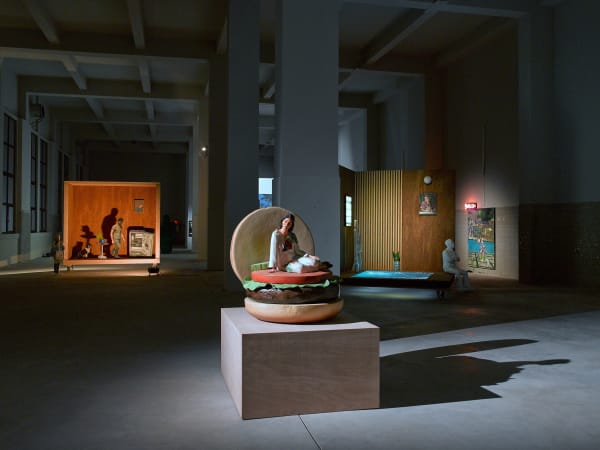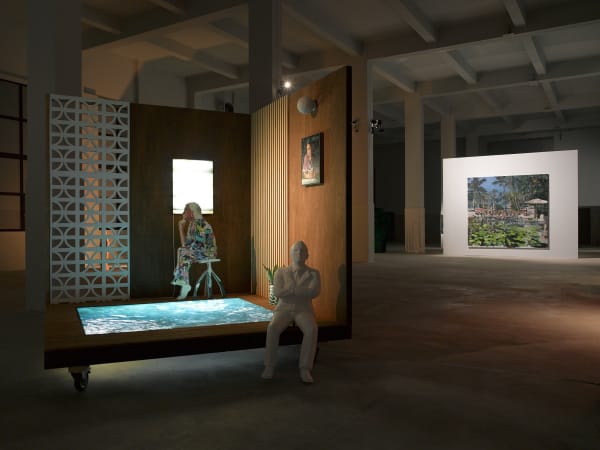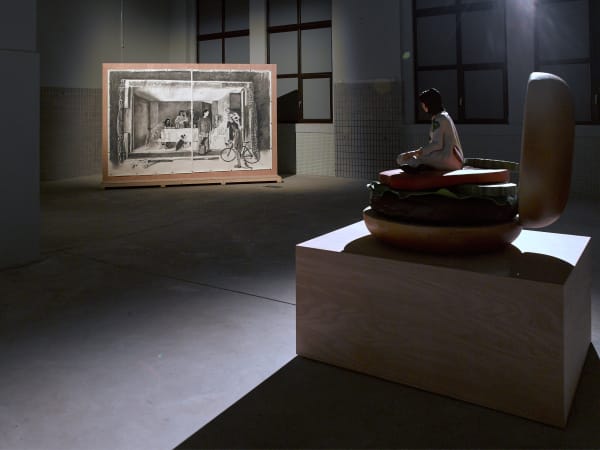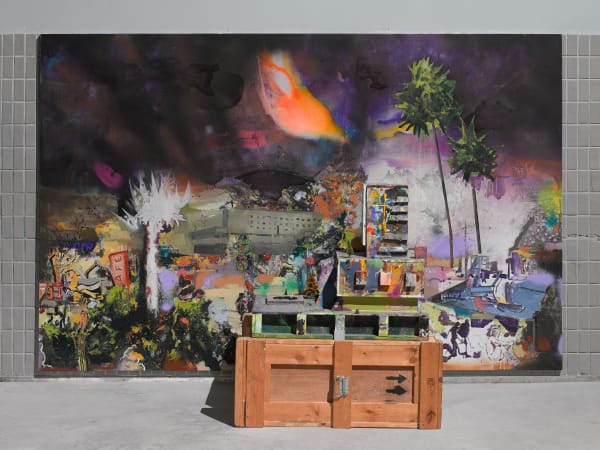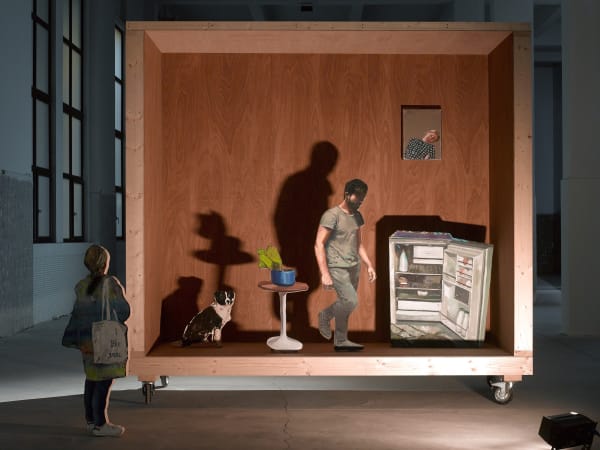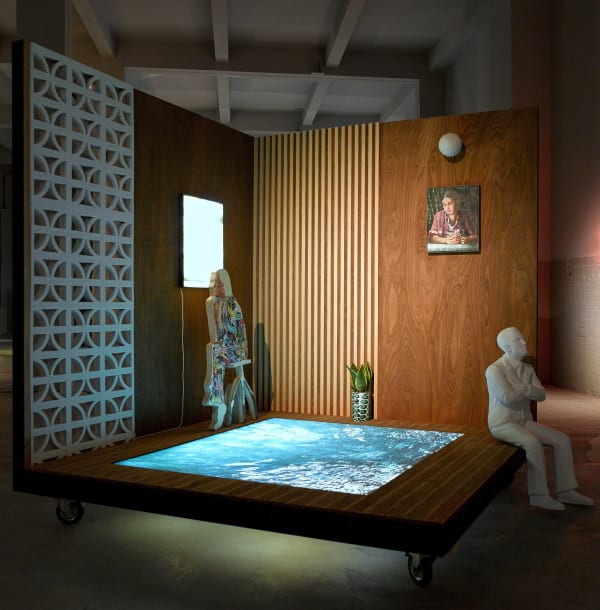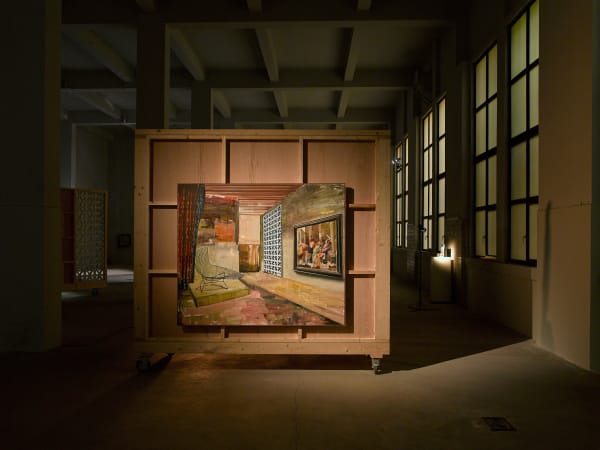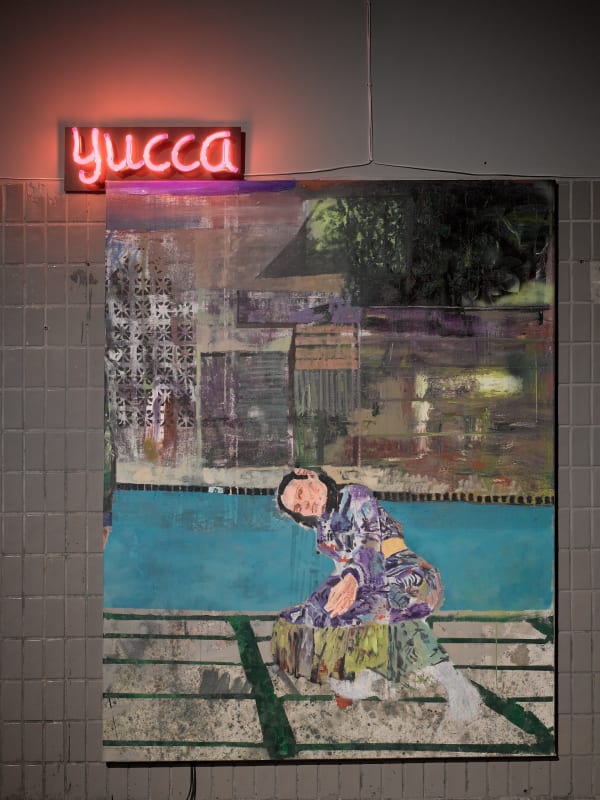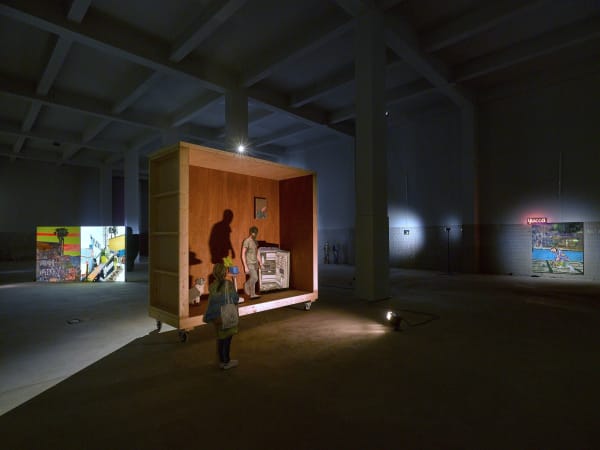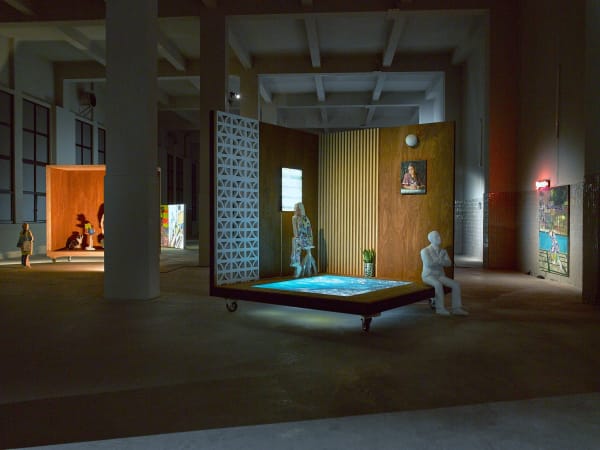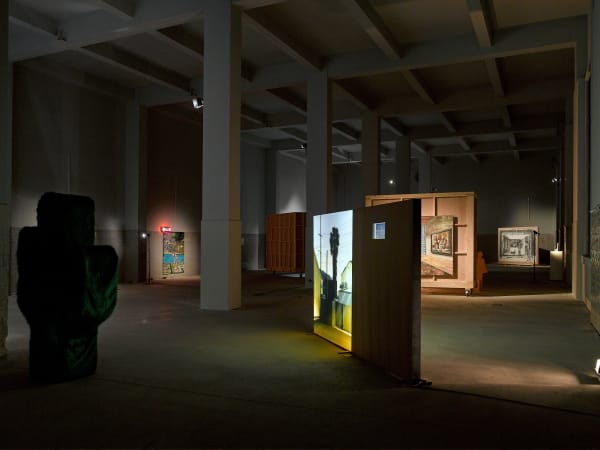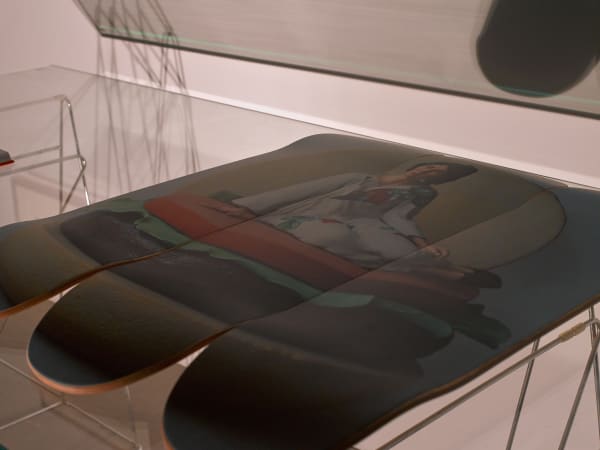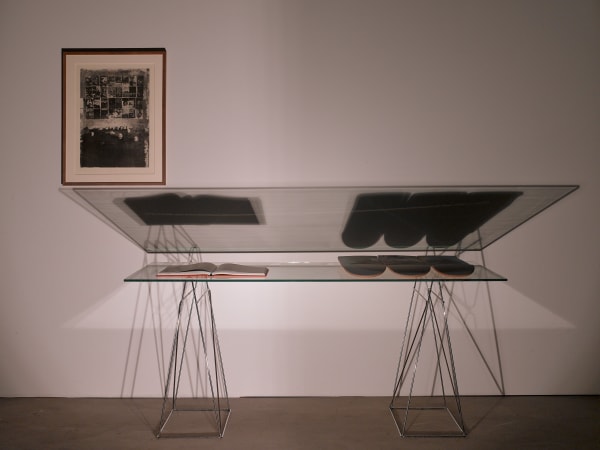Visiting Hours at Scânteia+
Thursday - Sunday: 12:00 - 20:00
In the play The New Tenant, Eugène Ionesco explores alienation, materialism and existential entrapment through an absurdist approach. The story follows a man who moves into a new apartment that gradually fills up with too much furniture, which suffocates him physically and metaphorically. The act of accumulation transforms the space into an oppressive, almost surreal environment, echoing Ionesco's themes of the absurd, the weight of existence and the loss of individual power in relation to external forces. A situation that can in a way be linked to the current exhibition by Marius Bercea, who also uses space as a kind of theatrical construct to interrogate the viewer's existential condition. If Ionesco's protagonist is trapped in a room that itself becomes part of a theatrical spectacle of accumulation, it is similar with Bercea's exhibition, which is conceived as a staged environment, with the paintings acting as "stage flats" and the props contributing to the mise-en-scene. Just as Ionesco's tenant transforms a living space into a striking, inescapable composition, Bercea's exhibition immerses the viewer in a multi-layered world where they become part of the narrative.
At the heart of Marius Bercea's artistic practice is a deep engagement with the changing urban and natural environment. His paintings often depict imaginary urban landscapes, unusual interiors and exteriors, and lush overgrown scenes of nature - places where time seems to have stopped or gone backwards. These scenes evoke a sense of nostalgia but also point to an uncertain future and reflect the complexity of transforming societies in transition. The architectural elements in his works - at times grand and imposing, at others fragile and crumbling - serve as metaphors for the broader social and historical changes that have characterized the spaces in which he has worked from his beginnings. Reflection in the context of the exhibition New Tenant | Sunshine Noir thus brings a new dimension to Bercea's artistic research, as it incorporates props and objects into the gallery space, sculptural elements that provide insight into the artist's creative process and reveal layers of construction - both literal and symbolic. If the history of painting is in a sense the history of the removal of material reality, inherent in the artist's alienation from the outside world, Bercea’s current gesture is marked by the return of material traces. By transferring physical elements from his studio into the exhibition, Bercea offers an experience that allows visitors to enter more concretely into his painterly world. The props, from miniature architectural models to hand-painted elements that form the basis for his canvases, act as bridges between the tangible and the painted, reinforcing the idea that reality is constantly reconstructed through memory, history and intimate perspectives. On the other hand, these same objects invite viewers to reflect on how objects and spaces can accumulate meaning over time, and this can also be understood as an echo of the processes of transformation and transience, elements that always appear in Bercea paintings.
That is why New Tenant | Sunshine Noir is more than an exhibition; it is an invitation to move through liminal spaces that stretch between memory and place, between the past and the present. Berce's work encourages a rethinking of history as a constant process of change rather than a fixed narrative, and in doing so he highlights the ways in which cultural identity is shaped by personal experience and collective history. Bercea's intricate layering of colors, textures and materials captures the essence of a world in motion, inviting viewers to consider their own relationship to possibility of 'landscapes', both physical and psychological. The relationships between objects, images and space go further, questioning both the authenticity of their primary role and the authenticity of the viewer's experience, which is inextricably linked to their rational, emotional and aesthetic experience.
Painting and theatre share a fundamental connection in that they are able to create a space for a specific situation, thereby shaping the way the audience engages with narrative, emotion and meaning. Both are based on composition, light and perspective in order to create an illusion of depth and atmosphere, both on canvas and on stage. In painting, spatial arrangements use color, shape and layering to guide the viewer's eye and suggest a world outside the frame, much as a stage set creates a context for a specific action. In both, space is not just a backdrop, but an active element that dictates movement, perception and interpretation. This relationality is also the reason why the tension between Ionesco's play and Bercea's exhibition is equally sensitive: while Ionesco's play uses spatial distortion and accumulation to express existential unease, Bercea's installation uses a dynamic, immersive environment that blurs the boundaries between art, theatre and audience participation. In this way, Bercea's approach is situated within the absurdist tradition, creating an environment in which perception and reality become unstable, much like the experience of a new tenant. The interaction between painting and the stage ultimately lies in their shared ability to construct immersive, situational spaces in which reality is re-presented and re-imagined.
This exhibition is brought to you by our main partner, Banca Transilvania, and with the support of Catena pentru artă.
It is also supported by: Cramele Recaș, Mellow Drinks, Bere Normala, Davidoff Coffee & BlackCab, our mobility partner.
Media partners: Revista Arta, Propagarta, ELLE, Apropo TV, Senso TV, Igloo
In collaboration with: Romanian Design Week, RAD 2025, 2 active.
Photo credit: Marius Poput

